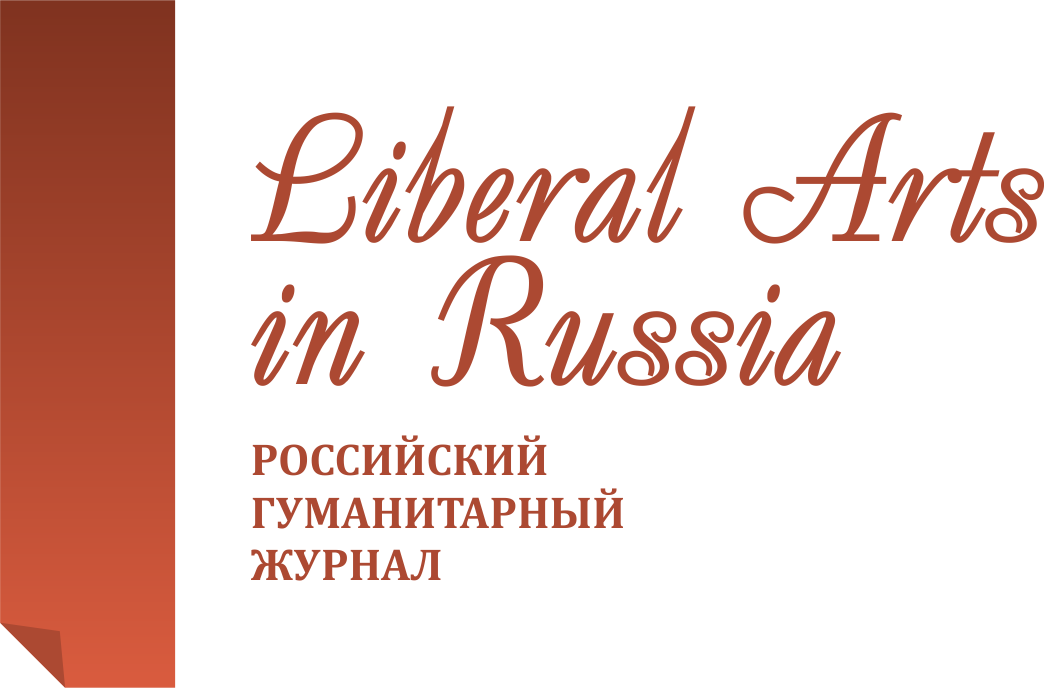Expressive syntax in children’s literature (on the material of the English language)
Liberal Arts in Russia. 2020. Vol. 9. No. 5. Pp. 315-321.
Get the full text (Russian) Email: eakorableva@mail.ru Abstract
The article is devoted to the study of the role of expressive syntax in children’s fiction (based on the material of the English language). Various expressive syntactic means, which were used in the book “The Borrowers Afloat” by Mary Norton, are analyzed. Special attention is paid to the role, functions, and frequency of parentheses, elliptical constructions, inversions, syntactic repetitions, parcelling constructions, nominative sentences, and rhetorical questions. The expressive potential of punctuation marks used in the book is indicated. The results of the study are the following: expressive syntactic devices are widely used in children’s fiction and play a very important role in it. They contribute to the creation of an emotional text, help the author to draw attention to certain information, imitate colloquial speech. Parentheses are the most common expressive means in the analyzed material. They are used to clarify information, draw attention to some ideas, express someone’s attitude to them. Elliptical constructions are very important in making emotional speech. The use of inversion is also aimed at drawing the reader’s attention to certain information. Syntactic repetitions and parcelling constructions are used to emphasize important points. Nominative sentences are not used very often, but they add emotions, especially when they are used with an exclamation mark. Other punctuation marks (dashes, ellipses, colons, semicolons, quotes) also can be used to enhance expressiveness. Different expressive syntactic means are often used together within the same sentence.
Keywords
- • expressive syntax
- • expressive syntactic devices
- • the English language
References
- Azarova N. D. Lingvopoeticheskie, semioticheskie i kommunikativnye osnovy angliiskoi punktuatsii: Na materiale sovremennoi angloyazychnoi khudozhestvennoi prozy: avtoref. dis. ... kand. filol. nauk. Moscow, 2001.
- Aleksandrova O. V. Problemy ekspressivnogo sintaksisa: Na materiale angliiskogo yazyka: Uchebnoe posobie [Problems of expressive syntax: based on the material of the English language: textbook]. 2 ed. Moscow: LIBROKOM, 2009.
- Aleksandrova O. V., Korableva E. A. Aktual'nye problemy lingvistiki i lingvodidaktiki inostrannogo yazyka delovogo i professional'nogo obshcheniya: Sb. mat-lov VIII Mezhdunarodnoi nauchnoi konferentsii. 2018. Pp. 14-15.
- Arnol'd I. V. Stilistika. Sovremennyi angliiskii yazyk: uchebnik dlya vuzov [Stylistics. Modern English: textbook for universities]. 13 ed. Moscow: Flinta, 2016.
- Valgina N. S., Rozental' D. E., Fomina M. I. Sovremennyi russkii yazyk [Modern Russian language]. Moscow: Logos, 2002.
- Efimova A. S. Nauchnaya sessiya GUAP: Sb. dokladov v 3 ch. SPB: Sankt-Peterburgskii gosudarstvennyi universitet aerokosmicheskogo priborostroeniya, 2017. Pp. 133-137.
- Zhitkova N. Yu, Golubeva I. V. Dostizheniya nauki i obrazovaniya. 2018. No. 17(39). Pp. 38-42.
- Korableva E. A. Ekspressivnye sintaksicheskie sredstva sozdaniya reklamnogo teksta na angliiskom yazyke: dis. ... kand. filol. nauk. Moscow, 2008.
- Ksenzenko O. A. Prosodicheskie i punktuatsionnye osobennosti reklamnogo teksta na angliiskom yazyke: dis. ... kand. filol. nauk. Moscow, 1996.
- Ksenzenko O. A. Yazyk. Soznanie. Kommunikatsiya. Moscow, 2000. Pp. 78-86.
- Kuznetsova O. G. Nauka i obrazovanie: novoe vremya. 2019. No. 2(31). Pp. 208-215.
- Mel'nichuk O. A., Androsova F. S., Elivanova A. M. Khudozhestvennyi diskurs: sintaksis, ekspressivnost', strategii: monografiya [Fictional discourse: syntax, expressiveness, strategies: monograph]. Yakut-sk: Izdatel'skii dom SVFU, 2013.
- Ryabova M. Yu. Filologicheskie nauki. Voprosy teorii i praktiki. 2020. Vol. 13. No. 2. Pp. 183-186.
- Khasanova N. F. Inostrannye yazyki v sovremennom mire: Sb. mat-lov IX Mezhdunarodnoi nauchno-prakticheskoi konferentsii. 2016. Pp. 351-357.
- Aleksandrova O. V., Korableva E. A., Kharkovskaya A. A. Functional Approach to Professional Discourse Exploration in Linguistics. Ed. E. N. Malyuga. 2020. Singapore: Springer Nature Singapore. Pp. 59-93.
- Delfittoa D. Lingua. 2014. Vol. 152. Iss. 6. Pp. 1-20. https://doi.org/10.1016/j.lingua.2014.09.003.
- Dzhagatspanyan O., Orlova S. International Journal of English Linguistics. 2020. Vol. 10. No. 5. Pp. 15-22. https://doi.org/10.5539/ijel.v10n5p15.
- Hackl M. Lingua. 2013. Vol. 130. Pp. 66-87. http://dx.doi.org/10.1016/j.lingua.2013.01.010.
- Kayne R. S. Lingua. 2013. Vol. 130. Pp. 132-151. http://dx.doi.org/10.1016/j.lingua.2012.10.008.
- Konietzkoa A., Winklerb S. Lingua. 2010. Vol. 120. Iss. 6. Pp. 1436-1457. https://doi.org/10.1016/j.lingua.2008.08.009.
- Maltzev V. A. An Introduction to Linguistic Poetics. Minsk, 1980.
- Norton M. The Borrowers afloat. Harcourt Young Classics, 1998.
- Wilder C. Lingua. 2013. Vol. 128. Pp. 142-171. https://doi.org/10.1016/j.lingua.2012.10.005.
